Monuments in Georgia reflect centuries of religious, cultural, and architectural development across the country’s diverse regions. Located in the South Caucasus, Georgia is known for ancient churches, medieval forts, and cave monasteries. Tbilisi, the capital, connects many historic sites, including fortresses, cathedrals, and archaeological settlements. Visitors often explore monuments to understand Georgia’s shifting empires and long-standing Christian traditions. Many of these sites are included in the UNESCO World Heritage list for their historical and cultural significance.
Top 10 Monuments In Georgia To Visit
This is the list of 10 well-preserved sites in Georgia’s diverse historical narrative, reflecting architecture, archaeology, and centuries-old cultural heritage
1. Svetitskhoveli Cathedral
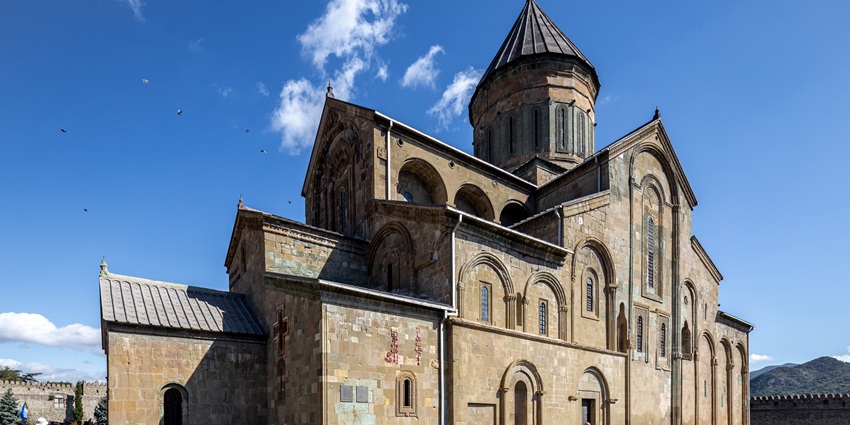
Photo: Supanut Arunoprayote / Wikimedia Commons
Svetitskhoveli Cathedral is one of the most important historical monuments in Georgia, dating back to the 11th century. Located in Mtskheta, it draws attention for its religious and architectural significance. Georgian kings were crowned and buried here, giving it political and spiritual value. The cathedral’s stone façade and balanced structure reveal medieval craftsmanship. According to tradition, it houses Christ’s robe, deepening its sacred status. It continues to function as a religious site, linking Georgia’s past to the present through rituals and faith.
Major Attractions: 12th-century frescoes, stone carvings, tombs of kings
Timings: 8 AM – 8 PM
Entry Fee: Free
2. Gelati Monastery
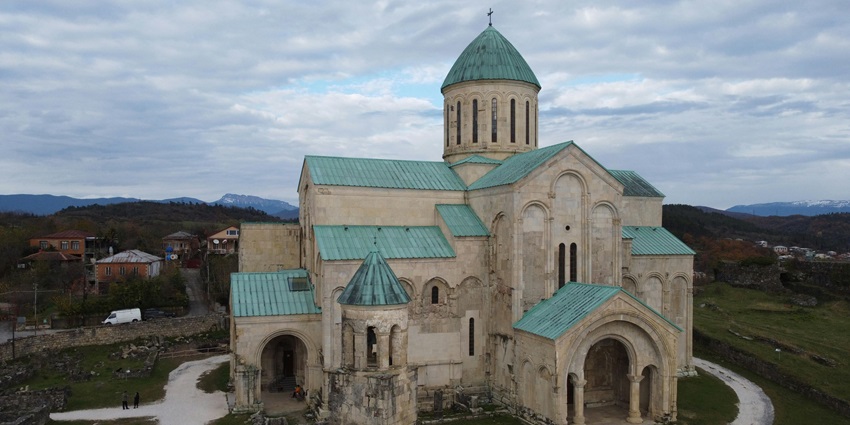
Photo: Matt Kiamco / Pexels / Image For Representation Only
Gelati Monastery near Kutaisi stands as a symbol of Georgia’s intellectual and spiritual heritage. Established in 1106 by King David IV, it served both religious and academic purposes. Scholars studied theology, astronomy, and philosophy here, giving the monastery a key role in shaping medieval thought. Mosaics and stone arches reflect artistic exchanges between Georgia and Byzantium. Visitors can view the burial place of King David, who is considered one of Georgia’s greatest rulers, and one of the famous monuments in Georgia. The site offers a deep dive into the country’s religious evolution.
Major Attractions: 12th-century frescoes, royal tombs, bell tower
Timings: 9 AM – 6 PM
Entry Fee: ₾5 / ₹150
3. Bagrati Cathedral
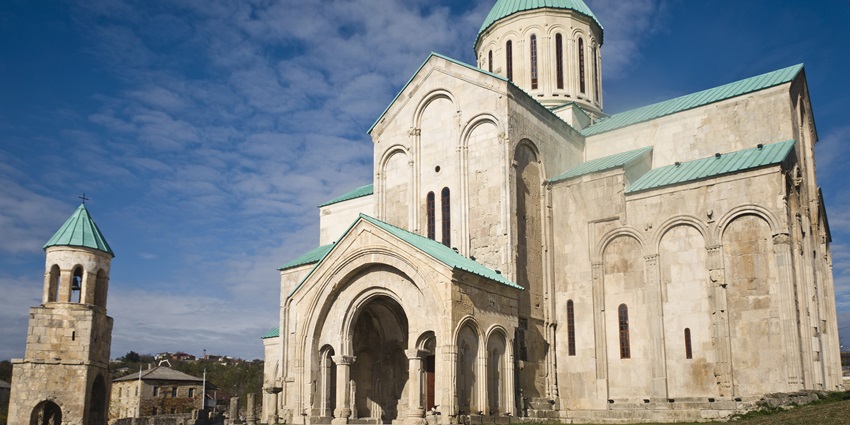
Photo: Brave Lemming / Wikimedia Commons
Bagrati Cathedral, recognized as one of the significant monuments in Georgia, was built in the early 11th century during King Bagrat III’s rule. Though partially ruined due to invasions, it has been partially reconstructed to preserve its cultural value. The structure symbolises the unity of the Georgian state during a period of consolidation. Positioned on Ukimerioni Hill, it provides a visual and symbolic link to Georgian resilience. Its medieval design influenced religious architecture across the region, leaving a mark on later generations.
Major Attractions: Ruins of original cathedral, surrounding hilltop views, bell tower
Timings: 10 AM – 6 PM
Entry Fee: ₾5 / ₹150
4. Vardzia Cave Monastery
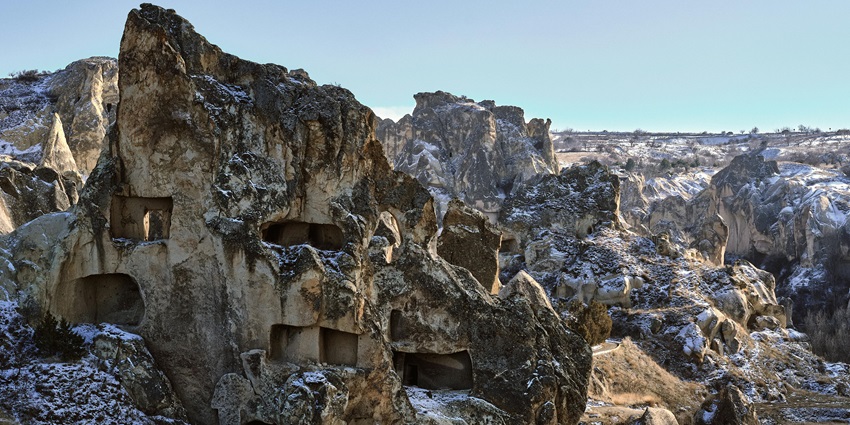
Photo: Selman Arif Golbasi / Pexels
Vardzia, a 12th-century cave monastery, reflects Georgia’s combination of defence and devotion during Queen Tamar’s reign. Built along the Kura River, it contains over a dozen levels of rock-carved halls and passageways. Created to protect the kingdom from foreign threats, it later became a centre of monastic life. Notable features include Queen Tamar’s fresco, a rare image of a ruling queen in medieval Christian art. This cliffside complex demonstrates how spiritual life and survival strategies often overlapped in historical Georgia.
Major Attractions: Queen Tamar’s fresco, tunnel network, cliff-face rooms
Timings: 10 AM – 6 PM
Entry Fee: ₾15 / ₹450
5. Narikala Fortress
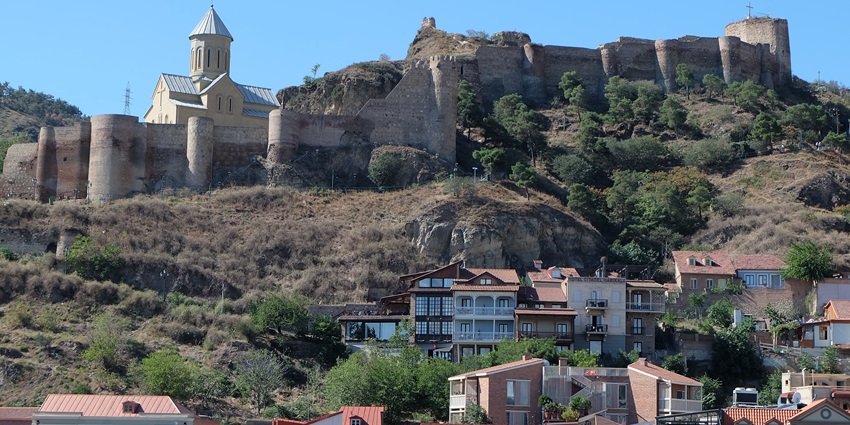
Photo: shankar s. / Wikimedia Commons
Narikala Fortress, one of Georgia’s oldest strongholds, provides insight into Tbilisi’s strategic importance through centuries of foreign rule and conflict. Built in the 4th century, it was gradually reinforced by Persians and Arabs before Georgian rulers expanded it further. Though much of it now lies in ruins, sections of the towers and walls remain visible. The reconstructed St. Nicholas Church adds a modern touch to this ancient site. Given its rich and extensive past, it is one of the popular monuments in Georgia.
Major Attractions: St. Nicholas Church, cable car ride, city views
Timings: 24*7
Entry Fee: Free
6. Uplistsikhe Cave Town
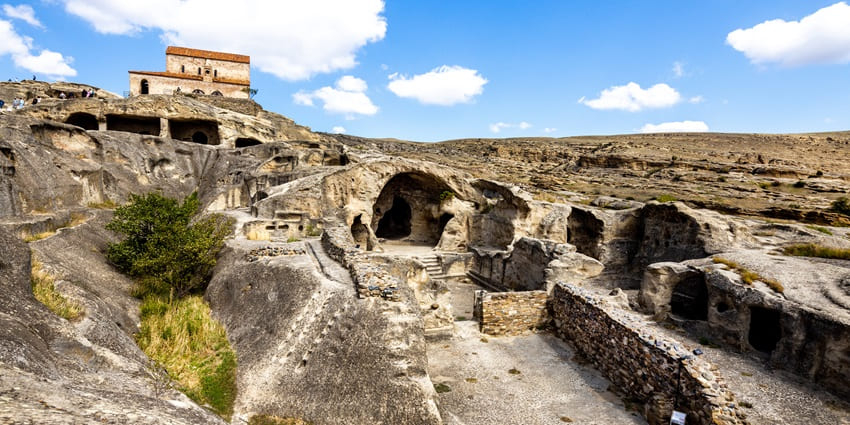
Photo: Supanut Arunoprayote / Wikimedia Commons
Uplistsikhe offers a rare look into pre-Christian Georgia, with rock-hewn structures dating back to the early Iron Age. Located near the Mtkvari River, it served as a hub for religious and political activities before Georgia adopted Christianity. Visitors can walk through chambers used for ceremonies, storage, and defence. Its elevated setting provided natural protection and control over trade routes. The town’s design, including a theatre and wine cellars, reveals the sophistication of early Georgian society and its adaptation to the natural environment.
Major Attractions: Pagan altar, ancient theatre, tunnel passages
Timings: 10 AM – 6 PM
Entry Fee: ₾15 / ₹450
7. Gergeti Trinity Church
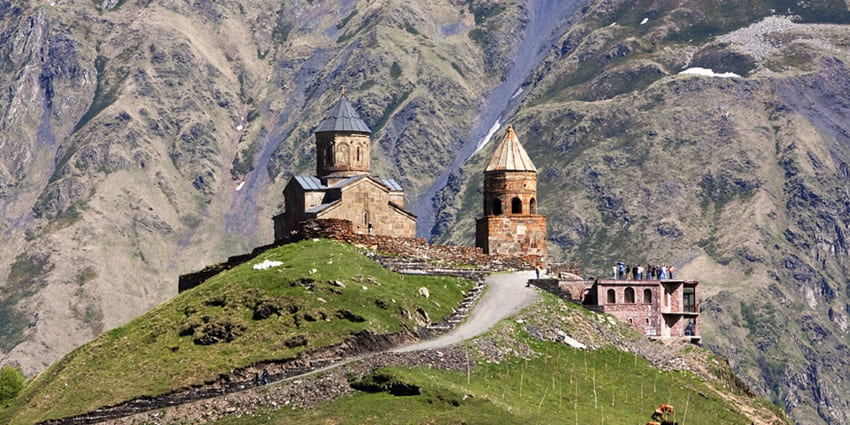
Photo: Levan Gokadze / Wikimedia Commons
Gergeti Trinity Church stands opposite Mount Kazbek and ranks among the most famous monuments in Georgia. Built in the 14th century, it protected sacred relics during invasions, making it both a spiritual and protective site. Its stone structure reflects traditional Georgian cross-dome design. Surrounded by mountains, it has long been a place of pilgrimage and endurance. Today, hikers follow a rugged path to reach it, while others appreciate its religious role in local customs and seasonal celebrations observed by nearby communities.
Major Attractions: Church of the Holy Trinity, mountain backdrop, hiking route
Timings: 9 AM – 5 PM
Entry Fee: Free
8. Katskhi Pillar
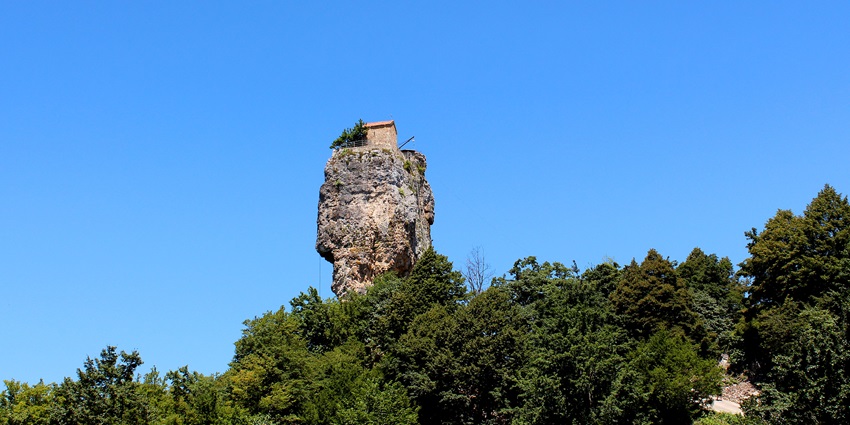
Photo: Kakhi Kuloshvili / Wikimedia Commons
Katskhi Pillar is a limestone monolith rising 40 meters, hosting a solitary church and monastic cell on top. This isolated column has been a center for Christian ascetic practice since the 9th century. Father Maxim, the resident monk, maintains daily rituals andakes care of the structure. While the summit is not open to the public, visitors can observe the formation and learn about its religious significance through nearby displays and chapels. The site reflects the spiritual dedication involved in maintaining faith under solitary and extreme conditions.
Major Attractions: Monastic cell, chapel ruins, surrounding forest
Timings: 9 AM – 6 PM
Entry Fee: Free
9. Akhaltsikhe (Rabati) Castle
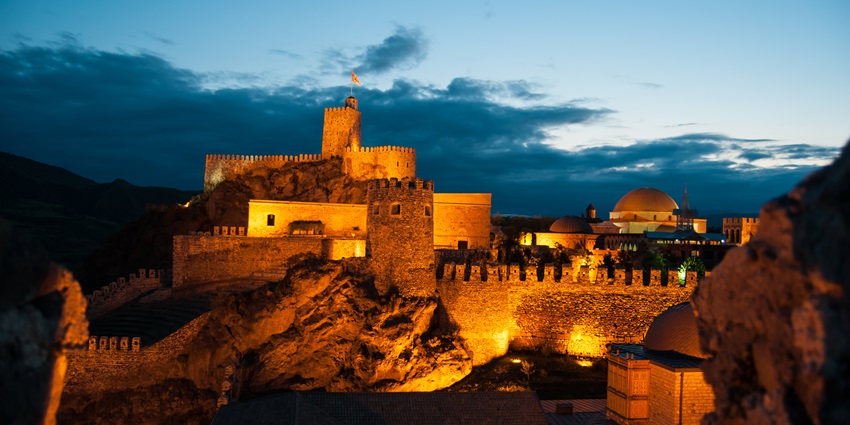
Photo: Alexey Yurko / Wikimedia Commons
Rabati Castle in Akhaltsikhe blends multiple architectural styles, reflecting centuries of change. Originally constructed in the 9th century, it grew under various rulers, including the Ottomans and Georgians. A restoration project in 2012 added museums, religious sites, and a cultural centre to the complex. It attracts visitors interested in military architecture, religious coexistence, and historical artefacts. The site’s structure includes fortifications, gardens, and religious monuments, representing Georgia’s interaction with neighbouring cultures through peaceful times and periods of conflict.
Major Attractions: Historical museum, mosque, amphitheatre
Timings: 10 AM – 6 PM
Entry Fee: ₾7 / ₹210
10. Gremi Citadel And Church

Photo: Dan Lundberg / Wikimedia Commons
Gremi Citadel served as a royal residence and a trading centre during the 16th century under King Levan of Kakheti. Set on a hill, the citadel includes a well-preserved church with interior frescoes depicting Biblical scenes. Visitors can explore a museum housing artefacts uncovered during excavations, such as weapons and ceramics. Once destroyed in the 17th century, the town never recovered, but its ruins still reflect its past political and economic role. This is one of the popular monuments in Georgia that delves into how power and commerce shaped medieval Georgia.
Major Attractions: Church of the Archangels, watchtower, small museum
Timings: 10 AM – 5 PM
Entry Fee: ₾5 / ₹150
Monuments in Georgia reflect centuries of religious devotion, political changes, and structural evolution. From ancient cave monasteries carved into mountainsides to medieval fortresses guarding former trade routes, each monument reveals how beliefs, defence needs, and artistic methods shaped the country. Explore more such packages offered by TripXL, and let it guide your travel plans as you uncover Georgia’s historical layers and appreciate its preserved structures.
Cover Photo: ANUKRATI DOSI / Pexels


 WhatsApp
WhatsApp
 Twitter
Twitter









